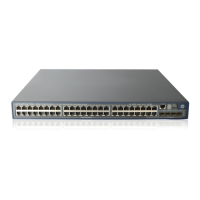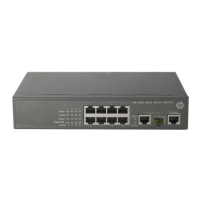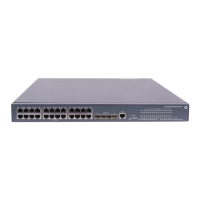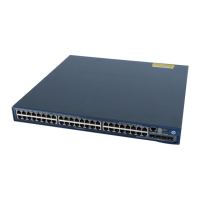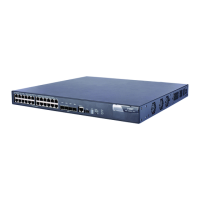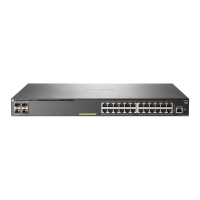364
To do… Use the command… Remarks
Enter system view
system-view —
Enter IPv6 PIM view
pim ipv6 —
Configure the hash mask length
c-bsr hash-length hash-length
Optional
126 by default
Configure the C-BSR priority c-bsr priority priority
Optional
64 by default
Configuring C-BSR timers
The BSR election winner multicasts its own IP address and RP-set information through bootstrap messages
within the entire zone it serves. The BSR floods bootstrap messages throughout the network at the interval
of BS (BSR state) period. Any C-BSR that receives a bootstrap message retains the RP-set for the length of
BS timeout, during which no BSR election takes place. If no bootstrap message is received from the BSR
before the BS timeout timer expires, a new BSR election process is triggered among the C-BSRs.
Perform the following configuration on C-BSR routers.
Follow these steps to configure C-BSR timers:
To do… Use the command… Remarks
Enter system view
system-view —
Enter IPv6 PIM view
pim ipv6 —
Configure the BS period
c-bsr interval interval
Optional
For the default value, see the note
under this table.
Configure the BS timeout timer
c-bsr holdtime interval
Optional
For the default value, see the note
under this table.
NOTE:
bout the BS period:
• By default, the BS period is determined by this formula “BS period = (BS timeout – 10) / 2.” The
default BS timeout is 130 seconds, so the default BS period = (130 – 10) / 2 = 60 (seconds).
• If this parameter is manually configured, the system will use the configured value.
bout the BS timeout timer:
• By default, the BS timeout value is determined by this formula “BS timeout timer = BS period × 2 +
10.” The default BS period is 60 seconds, so the default BS timeout timer = 60 × 2 + 10 = 130
(seconds).
• If this parameter is manually configured, the system will use the configured value.
CAUTION:
Be sure to configure the BS period value smaller than the BS timeout value.
